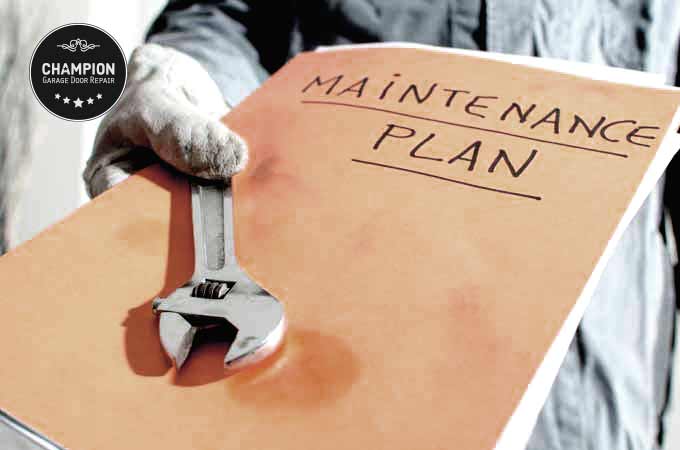Maintaining the garage door and its moving parts involves several basic steps to ensure the door’s optimal performance and longevity:
1. Cleaning
Regularly clean the door’s moving parts to remove dirt, debris, grease, and other contaminants that can accumulate on the surface. You can use a degreaser or cleaner designed for this purpose and follow manufacturer recommendations for cleaning procedures.
2. Lubrication
After the cleaning phase, apply lubrication to reduce friction, minimize wear, and ensure smooth operation. Choose the appropriate lubricant based on factors such as operating conditions, temperature, and load requirements.

Apply lubricant according to manufacturer guidelines, and reapply as needed to maintain proper lubrication levels. Avoid rust removers, degreaser or penetrating oils when lubricating the garage door.
3. Inspection
Periodically inspect the garage door sections and moving parts, such as rollers, springs, door cables, drums, pulleys and bearings, for signs of wear, damage, or corrosion. Look for any abnormalities, such as excessive play, noise, or vibration, which could indicate potential issues.
4. Balance and Alignment
Test the garage door balance and check the alignment of the door tracks, hinges, and torsion assembly. Properly balanced and aligned garage doors experiences less friction, vibration, and stress, leading to reduced wear and tear on components.
5. Tighten Hardware
Start with a thorough visual inspection to assess the condition of hardware and supporting brackets. Utilize appropriate tools such as wrenches or impact wrenches. Overhead garage doors typically use 5/16-inch, 3/18-inch, and 7/16-inch (11mm) 12-point nuts, screws, and bolts. Apply force gradually and evenly, taking care to avoid over-tightening, which can cause damage, or under-tightening, risking hardware failure.
6. Proper Handling
Handle garage door parts with care to avoid damage during installation, operation, and maintenance. Follow proper procedures for handling, repair, and securing components to prevent distortion, bending, or other forms of mechanical stress.
7. Maintenance Schedule
Implement a preventative maintenance schedule to regularly inspect, clean, and lubricate the garage door. This proactive approach can help identify and address potential problems before they escalate, minimizing downtime and costly repairs.
8. Protection and Prevention
Protect the garage door’s moving parts from environmental factors such as moisture, dust particles, contaminants, and extreme temperatures that can accelerate corrosion and wear. Use appropriate weather stripping to protect components such as bearings, rollers, springs, and hinges from harmful elements and prolong their lifespan.
Follow these essential steps every 6 to 12 months to inspect and maintain overhead garage doors. Address any issues promptly to prevent further damage and ensure safe operation, reliability, optimal performance, and longevity of garage doors, openers, and springs across various applications. These steps can help you maximize the efficiency and service life of overhead door systems and reduce the need for frequent repairs or sudden breakdowns. It’s always recommended to use licensed contractors to perform inspections, maintenance and repair work.







